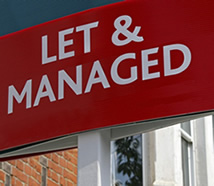Commercially let property and taper relief
 The abolition of capital gains tax taper relief, announced in the Pre-Budget Report, removes an important investment advantage of commercial property over residential property. The imposition of a flat 18% capital gains tax rate from 6 April 2008 will substantially increase tax on sales of commercial property for almost all non-corporate investors.
The abolition of capital gains tax taper relief, announced in the Pre-Budget Report, removes an important investment advantage of commercial property over residential property. The imposition of a flat 18% capital gains tax rate from 6 April 2008 will substantially increase tax on sales of commercial property for almost all non-corporate investors.
The change will prompt some investors to try to sell up before 6 April to minimise tax. But you should consider the commercial aspects of your present investment and any alternatives before you rush into a sale. Alternatively you may be able to realise your gains to date by transferring the property to a company you control or some other entity, but there are drawbacks to such a strategy.
Up to 5 April 2008, if you let commercial property, you may be able to pay capital gains tax at a rate of just 10% or less when you sell it – as long as the property qualifies as a business asset for capital gains tax taper relief purposes. There are several qualifying conditions of which you should be aware.
Capital gains tax effectively has a two-tier structure at present, which means that gains on business assets are treated far more favourably than gains on other assets. If you sell a business asset, taper relief reduces your chargeable gain by 50% if you have held the asset for at least one year, and by 75% if you have owned it for more than two years – and that is before deducting your £9,200 annual exemption. On non-business assets, taper relief is also given, but it is much less generous and only reduces the chargeable gain by 5% after three years of ownership, and then by another 5% for each further year up to a maximum 40% relief after ten years. So for non-business assets that qualify for maximum taper relief, the effective maximum rate of tax on the gain is 24% (60% of the gain at a tax rate of 40%).
Whether a commercially let property is a business asset or not depends on the tenant. The property will qualify if the tenant is a sole trader, a trading partnership or an unlisted trading company. Companies listed on the stock exchange and most other tenants do not qualify.
That is the easy bit. The complication is that the taper relief rules have changed since the relief was introduced on 6 April 1998. For the first two years, a property could not qualify as a business asset if the owner let it to an unconnected business. From 6 April 2000, letting to any unlisted trading company qualified, but only from 6 April 2004 did the present rules come into effect.
To calculate taper relief you have to look at the use of the property in the period of ownership since 6 April 1998. Where the business status of the property has changed during that period, or if different parts of the property have different status, it is necessary to calculate taper relief separately for the business part and for the non-business part.
We can carry out these calculations for you and compare the potential tax liabilities on a sale up to 5 April 2008 and thereafter, as well as advise you on what else you should take into account in deciding whether to keep or sell your investment.